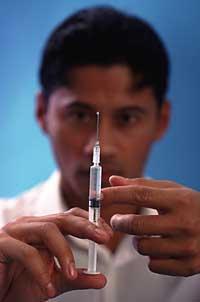Good and bad news about malaria
To introduce the parasite into the blood cells, it must first be associated with the cell membrane. For this purpose, a parasite protein in the membrane binds to a receptive protein of the blood cell, as if it were a key and its lock. To date, only one parasite protein and one blood cell receptor had been identified, but scientists suspected there are many more.

A new protein and receptor have now been identified in Australia. The new protein identified in Plasmodium is called EBA140. Trials with antibodies have shown that glycoforine in the blood cells in the membrane is associated with the receptor C.
In the United States, samples taken around the world have analyzed variations with EBA140 proteins. Four different variations have been found, of which only one is able to associate glycoforin from the blood cell to C.
All this shows that the parasite has several ways to associate with blood cells. This significantly reduces the chances of getting a unique vaccine against malaria. According to scientists, until all the mechanisms of entry of Plasmodium into the blood cells are known, mechanisms for combating the disease cannot be designed. Therefore, researchers still have a lot to do in the fight against malaria.
Buletina
Bidali zure helbide elektronikoa eta jaso asteroko buletina zure sarrera-ontzian











